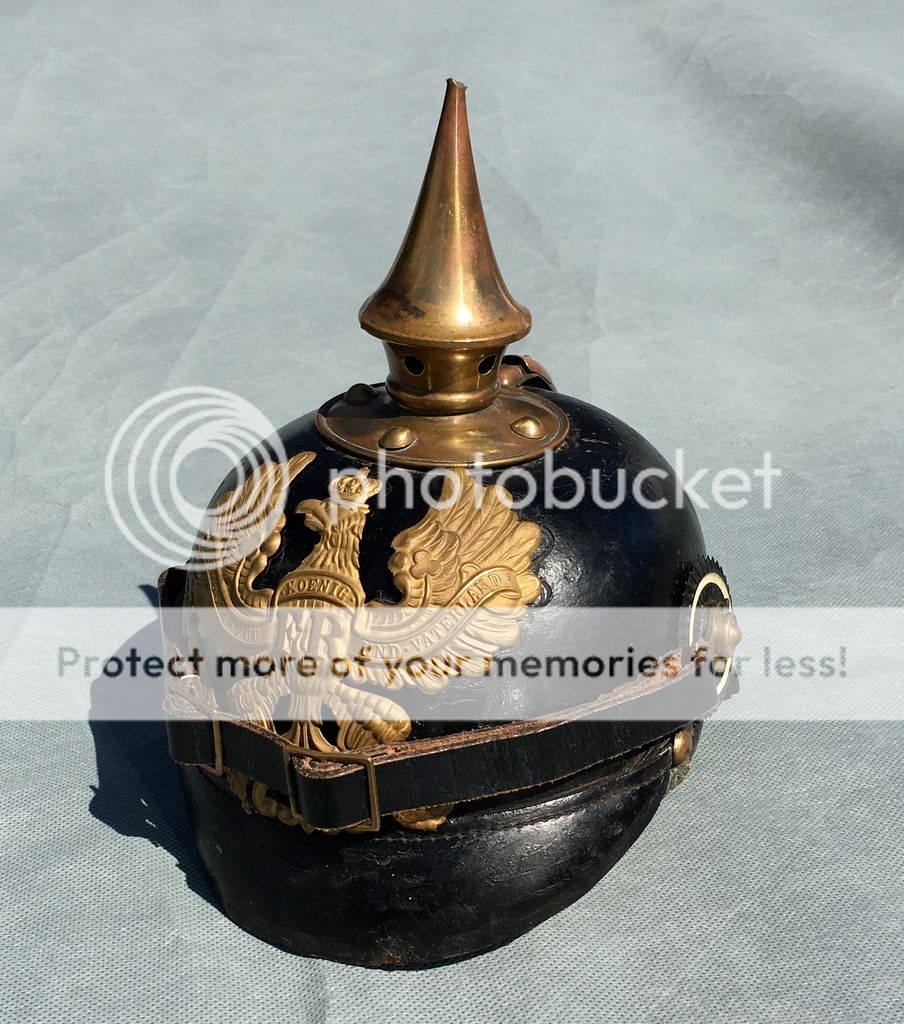joerookery
Well-known member
COVER - SPIKED HELMET, M1884/92: This was the FIRST helmet cover designed for camouflage, but this 1892 cover is made on the 1884 pattern where the boot is an integral part of the cover. This one is rather rare as it was made in the "rush green" which has faded out over time. Technically, this first "color" cover was made in 1892 and modified with cloth strips holding the spike boot (to accomodate different size spikes). This cover was made on the 1884 pattern, so it is a transitional piece, being the very first type made for camouflage purposes but using the old pattern. Marked "58" inside, EXC condition w/sun fading with correct brass hooks to hold it on the helmet. All original, a very rare transitional spiked helmet cover that can be dated to 1892. Have never seen an 1892 cover like this.
I don't understand this description at all. This looks nothing like an 1884. Probably is some sort of 1892 variant with inadequate ventilation. Like the example I showed above these existed but this goes back to my argument that there is a basic misunderstanding of Probe. I think the word transitional is poor. A variant based on local acquisition is in my opinion more likely.
The misunderstandings seem to trace all the way back to the 1930s, where an article by Doctor Klietmann and Pietsch in a renowned journal seems to have made several errors in fact. Nonetheless this is still somewhat controversial as modern references continue to cite Pietsch in error, and others consider this to be an a priori argument based on a lack of understanding of Probe during mobilization. The opinion of this author is that the existence of pictures and examples provide prima facie evidence that the selected Probe examples did not always follow the AKO. This becomes even more obvious if the critic were to consider the AKO that gives Probe guidance on 3 February1897.
I do not have the energy to reengage on all of the ad hominem attacks made on me related to this issue. That is my opinion and that is all it is.

